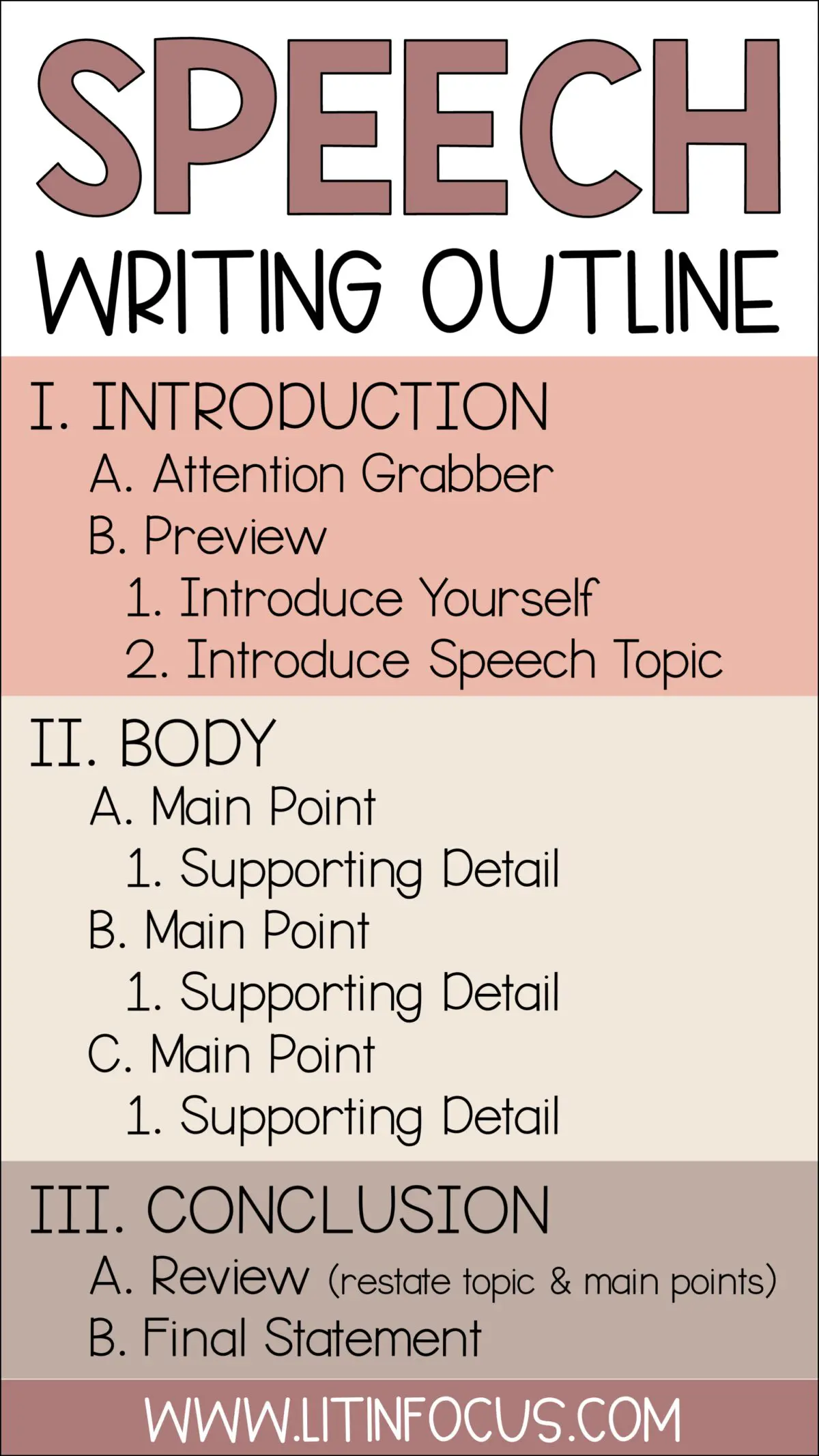
Speech Writing Outline and Format for Students
Learning how to write a speech is a skill most students will need help refining. Guide your students through the speech writing process with the outline and descriptions below. All of the major components of a speech are included and explained in a format students can understand and apply. Once students understand the step-by-step method for crafting a successful speech, they will feel more confident speaking in front of an audience.
I. Introduction
The beginning of a speech is called the introduction. The introduction is important because it sets the tone for the entire presentation. The introduction can be broken into two parts: the attention grabber and the preview.
A. Attention Grabber: Capturing the attention of the audience is the first thing the speaker says or does. In order to do this, the speaker might tell a humorous story, ask a rhetorical question, describe a hypothetical situation, or share an interesting fact.
B. Preview: The second part of the introduction is when the speaker introduces himself or herself and the topic of the speech. The main points of the speech can also be presented at this time.
II. Body
After the introduction, the speaker transitions to the body of the speech. This is where the speaker will spend the most amount of time. The goal of the body of the speech is to clearly explain the topic.
A. Main Points: To clearly explain the topic, the body of the speech is broken down into main points. The number of main points will vary from speech to speech. Regardless of the number, it is important to keep the main points organized in a purposeful way. Also, clear transitions between main points (and throughout the speech) are critical. Without them, the audience will have trouble following along.
1. Supporting Details: Each main point needs supporting material to help the audience understand and remember that point. Examples, explanations, visual aids, and props can be used as supporting material.
III. Conclusion
The conclusion puts the finishing touches on the speech. It lets the audience know that the speech is about to end. Like the introduction, the conclusion can be broken into two parts: the review and the final statement.
A. Review: During the first part of the conclusion, the speaker restates the topic of the speech and each main point.
B. Final Statement: The speech ends with a strong final statement. The final statement addresses the topic one last time in a powerful and meaningful way. The purpose of the final statement is to round out the speech and provide the audience with a strong signal that the presentation is complete.
Click here to download everything you need to teach your students how to write an organized speech. The comprehensive lesson includes “How to Write a Speech” informational text, comprehension questions, example speech, speech outline template, speech writing rubric, and a list of 40 student-friendly speech topics.
Speech Writing Lesson Bundle

“This was an excellent way to begin the year in my speech class. It was very informative for students, had a fun appearance, and was easy to follow. I know I will use this every semester! Thank you!” -Kim O.
Students LOVE this microphone!
This wireless Bluetooth microphone is perfect for student presentations, read alouds, speeches, and so much more! The microphone has 27 colorful LED lights that flicker in rhythm with the voice. You can also use this wireless microphone as a portable Bluetooth speaker. It’s available in a bunch of different colors, and it comes with a nice storage case.
⭐️⭐️⭐️⭐️⭐️ Over 18,000 ratings on Amazon!
“The kids loved this! I think it encouraged them to try to talk more!”
This post contains affiliate links. Click here to read my affiliate policy.







